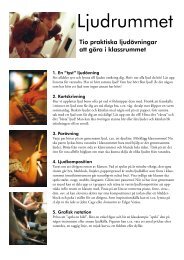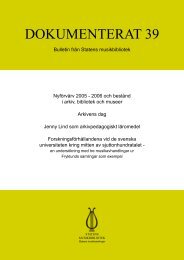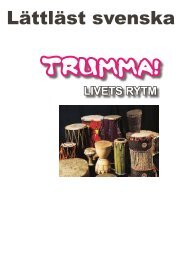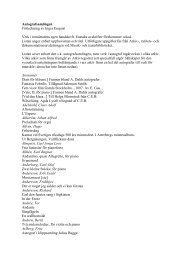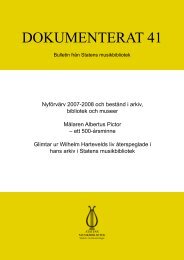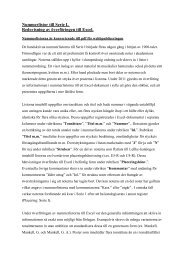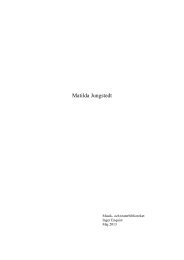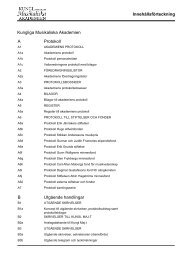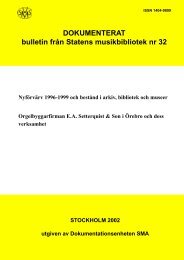Ladda ner (PDF) - Statens musikverk
Ladda ner (PDF) - Statens musikverk
Ladda ner (PDF) - Statens musikverk
You also want an ePaper? Increase the reach of your titles
YUMPU automatically turns print PDFs into web optimized ePapers that Google loves.
Yet another source that Gunnar Larsson points out are stories about<br />
cat-organs from the 1500s and 1600s, one of which tells about how<br />
such an instrument could be used to counter melancholy, to cheer up<br />
depressed people.<br />
Gunnar Larsson identifies the beginning of the music, to me it is not<br />
very clear, it is the same as the one on top of the pig, and it may be<br />
described as a song against melancholy with the text “hohe Freude”.<br />
What function did such music have in Duke Karl’s bedroom? It may<br />
have worked as a talisman protecting bad things happening. And maybe<br />
Duke Karl needed that because some in his family suffered from<br />
depression, namely his half brothers Erik and Magnus. 13 Moreover, if<br />
your mind was uneasy, music would of course comfort you. So there<br />
were really good reasons to have such a motif in a bedroom.<br />
These are interesting and valuable hypotheses that bring in new<br />
aspects, but I do not find that there are enough real proofs. However,<br />
this picture serves as a good example on how one needs to take into<br />
consideration that another picture may have served as a model. This<br />
is always something one must observe carefully when evaluating a<br />
picture as a source. It may mean that the painting perhaps illustrates<br />
not what one was hoping for but rather mirror something in another<br />
country where the original picture was created or published.<br />
We have yet another picture with special musicians and it also touches<br />
upon the problem with models. This is a painting from the church<br />
Häverö, north of Stockholm. The paintings date back to about 1500<br />
and have been attributed to the Knutby Group. A common factor<br />
about the paintings of this church is that they are based on the Biblia<br />
Pauperum. 14<br />
The term Biblia Pauperum means Bible of the poor, and poor refers<br />
here not to the ones without money or food but rather to the ones<br />
in need of a “spiritual refill”. This Bible illustrates scenes from the<br />
life of Christ. Each scene is shown together with the parallel event<br />
from the Old Testament which is considered to foretell the event<br />
in the New Testament. This is a so called typological use of the<br />
Old Testament.<br />
13 Gunnar Larsson refers here to a study by Victor Wigert: Erik XIV,<br />
historisk-psykiatrisk studie, Stockholm 1920, p. 191 “Contra omnia<br />
quae recreant affectus anima amet musicam laetas consolationes et<br />
colloquia suavia.”<br />
14 See Ingebjørg Barth Magnus, & Birgit Kjellström, Musikmotiv i svensk<br />
kyrkokonst: Uppland fram till 1625/Musical motifs in Swedish church<br />
art: The region of Uppland up to 1625. Stockholm, 1993, p. 35,<br />
187-194.With parallel text in English. A more ge<strong>ner</strong>al description of<br />
the church is given in Karl Asplund and Martin Olsson: “Häverö kyrka”.<br />
In the series Sveriges kyrkor, vol 8, p. 1- 68. With a summary in German.<br />
35




